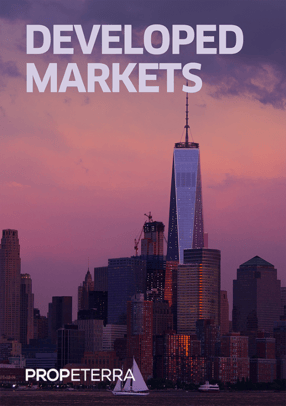Santa Cruz de la Sierra is one of the fastest growing cities in the world. Located in the Santa Cruz department of Bolivia, in the lowlands east of the Andes Mountains, the city’s first inhabitants were primarily Native Chané from East Bolivia. After them came the Spanish along with Paraguya’s Guarani. This has resulted in most of the city’s population being mestizo.
Santa Cruz de la Sierra currently has a population of over three million people and generates nearly a third of Bolivia’s GDP. Migration from Bolivians in rural areas has fueled meteoric growth in recent years. This has led to significant development in the city, with the Ventura Mall, Bolivia’s largest, a symbol of this rapid expansion. Hotel groups Marriott and Radisson have already built hotels in the city. In late 2020 French hotel group Accor announced that it would be building a new Swissotel, featuring 138 rooms, rooftop bar, gym and heated pool. Luxury residential property developers have targeted neighbourhoods such as Equipetrol and Urubó. Some haciendas in these areas are already being sold for multiple millions of dollars. Quinta Katawango, for example, a five-bedroom hacienda ten minutes from Equipetrol, is on the market for $2m.
Santa Cruz de la Sierra is not the only target of these structural shifts. A new sister city, Nueva Santa Cruz, is being built to accommodate the area’s swift urbanisation. This new city, spread over 6,000 hectares, is north of Santa Cruz, roughly 5km from Viru Viru International Airport. Construction has been underway for roughly two years and it has been estimated that there will be enough homes for 370,000 people, with a focus on housing for Bolivians as opposed to expatriates.
Santa Cruz de la Sierra. Image: Getty Images
From a real estate investment point of view, this combination of substantial numbers of Bolivians moving to the city and billions of dollars, from both local and foreign entities, being poured into construction projects is promising. However, some challenges remain. First, it has been noted that in certain areas supply is outstripping demand. This current glut in housing has already caused a decline in rental prices. Therefore, the specifics of these demographics and the construction projects, in particular the rate of new home-building, should be monitored closely.
Head and tailwinds impacting Bolivia as a whole should also be considered. On the one hand, the pandemic has catalysed arguably the country’s worst economic downturn in 70 years: GDP dropped by 8% and unemployment increased by 11%. There are political headwinds: it was only in 2019 that violent protests erupted over ex-president Evo Morales’ disputed re-election victory. On the other hand, there is cause for some optimism. Luis Arce, the current president, has begun to tackle the country’s land titling and judicial systems, both of which are highly corrupt. Furthermore, in December 2020 he announced the discovery of a natural gas field. There will also be a $725m investment to construct a zinc foundry in Oruro. This commitment to the creation of a more transparent investment environment and a continued targeting of natural resource extraction are both positive moves.
Despite its recent, remarkable growth, Santa Cruz de la Sierra’s fortunes are closely linked to the nation’s wider economy. Bolivia faces a challenging year ahead and investors should pay particular attention to the country’s housing supply and judicial system.





